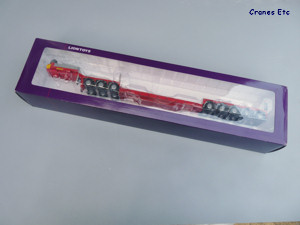 |
| Windowed box. |
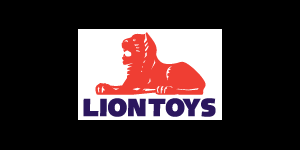 |
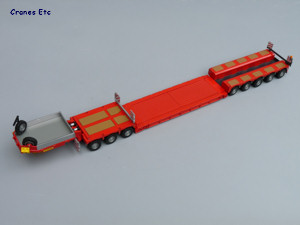 |
|
Trailer as configured in the box. |
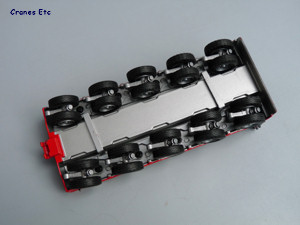 |
| Underside of
the 5-line unit.
|
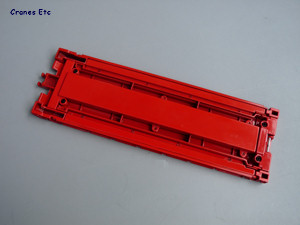 |
| Underside of the
deck. |
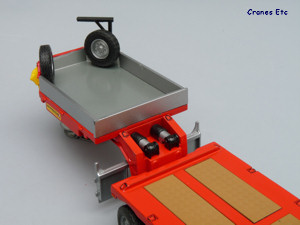 |
| Gooseneck
cylinders look good but are non-functioning. |
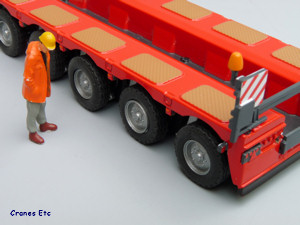 |
| Width markers
and beacon light at the rear. |
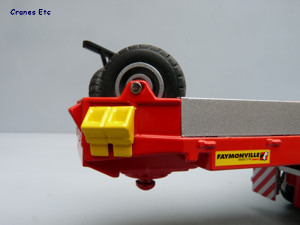 |
| Wheel chocks
and graphics on the gooseneck. |
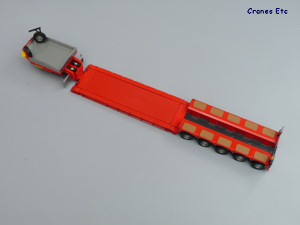 |
| Configured
without the front 3-line unit.
|
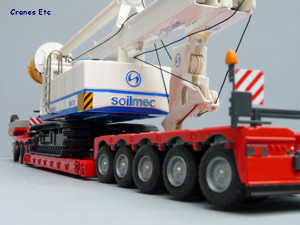 |
| Loaded with a
Soilmec
SR-70.
|
|
Faymonville is a Belgian
manufacturer of semi-trailers for the specialist haulage
industry. It was founded in 1962 and at the time of the
review has over 500 employees.
This model appears to be a trailer from the Variomax or
Pendlemax range.
Packaging
The model comes in a windowed box and is contained
with an expanded polystyrene tray and held in place by a
clear former. A beacon light was loose in the box
but it was not clear where it had detached from.
There is no information about the real trailer and no
instructions for the model. The only assembly
required is to fit the chosen kingpin onto the gooseneck
and this requires the top and bottom plates to be
unscrewed. This is a straightforward task.
Detail
The axle units have good tyres mounted on plastic hubs
fixed to plastic axles. The decoration lacks a
reflective yellow stripe along the edges but the tie-off shackles
are carefully painted and look good. Both units
have a plastic mud flap at the rear.
The 3-line unit has plastic patterned deck inserts and
fixed plastic width markers. The 5-line unit has a
central well and the rear width markers have a painted
beacon light which would look better if it was a plastic
lens. At the rear the lights are painted but there
is no reflective decoration.
The gooseneck is a nicely cast piece with plastic silver
side walls. There are some good details such as
the Faymonville graphic, the wheel chocks and bolt
details around the king pin locations. The supplied
king pins are relatively fat so will not fit tractors by
other makers but as the king pins are user-fixed skilled collectors may be able to fit
thinner king pins.
The deck is all metal and heavy with representation of
deck planks within the casting and good painted tie-down shackles.
Features
Both axle units have working steering which is
linked. It produces a parallel action rather than
proportional.
The deck can be extended for both length and width and
at its longest makes the overall trailer almost 60cm
with the deck length being 28cm. The maximum deck
width is 8cm.
Two gooseneck pins are supplied (one long and one short)
and these can be fitted in two different locations.
The trailer can be assembled in a variety of
configurations. The 3-line axle unit can be left
out, or the deck can be left out and a 5-line or 8-line
trailer formed.
The 3-line unit can be used behind the deck although it
then lacks rear lights and may not be an authentic
combination.
Quality
This Lion Toys model is generally strong and well made.
The paintwork is good although it lacks finer detailing
and graphics.
Price
It is reasonable value for money.
Overall
The strength of this model is the flexibility it offers
in terms of display configurations. It does not have
the highest level of detailing but would look smart in
company liveries.
Footnotes
The model first appeared as a prototype at the Nuremberg
Toy Fair in 2009.
It was manufactured in 2011, but not released at that
time due to licensing issues.
|
|
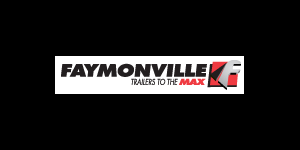 |
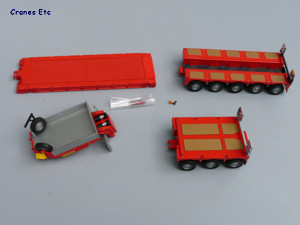 |
| Parts out of the box.
|
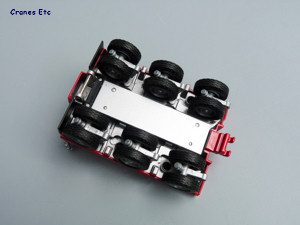 |
| Underside of
the 3-line unit. |
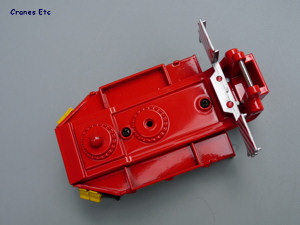 |
| Bolt details at
the king pin locations on the underside of the gooseneck. |
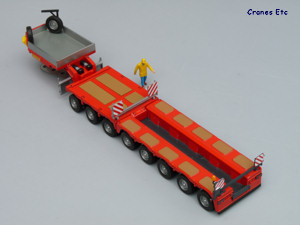 |
| Axle units
linked without the deck. |
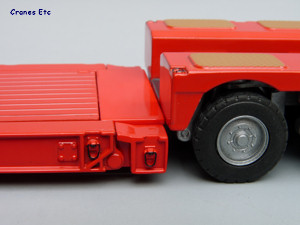 |
| Good looking
tie-down links. |
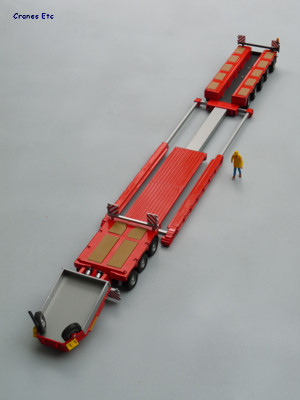 |
| Configured for
maximum length and width. The gooseneck droops
unless it is chocked up. |
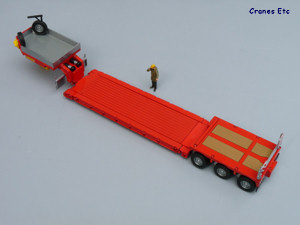 |
| Configured with
the 3-line unit at the rear, but this may not be a valid
set-up and it lacks rear lights. |
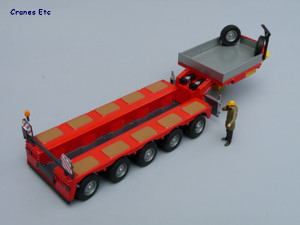 |
| Short
configuration with a 5-line unit. |
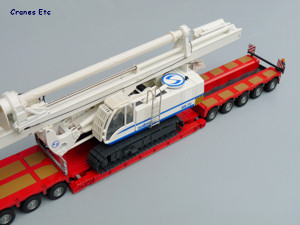 |
| Looks good with
a load. |
|

